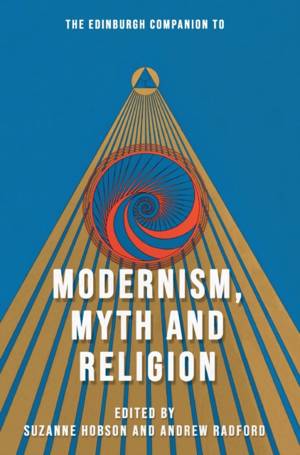
- Afhalen na 1 uur in een winkel met voorraad
- Gratis thuislevering in België vanaf € 30
- Ruim aanbod met 7 miljoen producten
- Afhalen na 1 uur in een winkel met voorraad
- Gratis thuislevering in België vanaf € 30
- Ruim aanbod met 7 miljoen producten
The Edinburgh Companion to Modernism, Myth and Religion
Omschrijving
Until fairly recently, the 'Authorized Version' of cultural modernism stated that the secularizing trends of liberal modernity - and the resultant emphasis on irony, parody and dissolution in modernist artforms - had pushed religion to the edges of early twentieth-century culture. This Companion complicates this 'Authorized Version' by furnishing students and academic researchers with more nuanced and probing assessments of the intersections - and tensions - between religion, myth and creativity during this half century of geopolitical ferment. The Companion addresses the variety and specificity of modernist spiritualities; as well as the intricately textured and shifting standpoints that modernist figures have occupied in relation to theological traditions, practices, creeds, and institutions. What emerges is a multi-textured account of modernism's deep-rooted concern with the historical and established forms of religion as well as new engagements with 'occulture' and indigenous traditions. In short, this Companion supplies a lively and original introduction to the aesthetic, publishing, technological and philosophical trends that shape debates about spirituality, community and self from the 1890s to the 1940s and beyond.
Specificaties
Betrokkenen
- Uitgeverij:
Inhoud
- Aantal bladzijden:
- 552
- Taal:
- Engels
- Reeks:
Eigenschappen
- Productcode (EAN):
- 9781474494786
- Verschijningsdatum:
- 10/01/2023
- Uitvoering:
- Hardcover
- Formaat:
- Genaaid
- Afmetingen:
- 175 mm x 246 mm
- Gewicht:
- 1043 g

Alleen bij Standaard Boekhandel
Beoordelingen
We publiceren alleen reviews die voldoen aan de voorwaarden voor reviews. Bekijk onze voorwaarden voor reviews.










